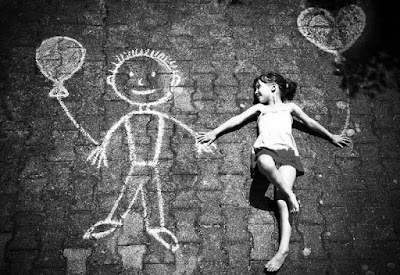>Exámenes selectividad inglés Cantabria resueltos
 When journalist Eleanor Tucker was at primary school in the 1970s, she had a friend. He wasn't a child and he wasn't a girl. He was in his 30s, he had a beard and his name was Klas.
When journalist Eleanor Tucker was at primary school in the 1970s, she had a friend. He wasn't a child and he wasn't a girl. He was in his 30s, he had a beard and his name was Klas.
She explains: “Klas was my imaginary friend. He wasn't about all the time, because he lived near my grandmother in a white house by the station, about half an hour's drive from ours. But as I grew up, he was often mentioned and even blamed for some mistakes I made. If I talked when nobody was around, it was to Klas. If I sometimes played without my sister, I was playing with Klas. It seemed quite normal at the time to have an imaginary friend but lots of things pass for normal when you're a kid. By the time I went to secondary school, Klas had stopped visiting. I filed him away under “the past” and forgot about him, until a book I read recently made me think of him again.”
The author of the book is Nikki Sheehan, and as part of her research, she discovered that rather than being an outdated phenomenon, imaginary friends might actually be more common nowadays. But why? First, it's probably just a more accurate representation of the way that children play. “For most of the 20th century the general idea was that imaginary playmates were a sign of insecurity, so people may have been less inclined to admit to having an imaginary friend.” Sheehan also suggests that within smaller family units, children these days are more likely to play in a certain solitary way, which creates an environment that is welcoming to imaginary friends.
Imaginary friends come in a huge range of guises, as educational psychologist Karen Majors discovered.
They might be smaller versions of the children themselves; humans or sometimes animals; based on real people or TV characters; single or multiple; and varied in terms of gender, age and temperament. In general, girls often create imaginary friends who need taking care of, but the characters impersonated by boys are often “super competent” and might be a representation of the child's own aspirations.
(28.02.2014 The Guardian, Adapted).
RESPUESTAS
READING COMPREHENSION
Question 1: [2 POINTS] Indicate whether the following statements are true or false and write down which part of the text justifies your answer.
a) Eleanor’s imaginary friend Klas lived just a few minutes away from her.
b) Eleanor still imagined Klas when she was a university student.
c) Sheehan says there are probably more imaginary friends now than before.
d) Imaginary friends are always based on humans.
Question 2: [2 POINTS] Answer the following questions in your own words according to the text.
a) Describe Eleanor and Klas’ friendship in your own words.
Key points:
- – Klas was Eleanor’s imaginary friend.
- – They were very different and do not live close to each other.
- – She played with him and talked to him when she was alone.
- – She stopped imagining him when she went to secondary school.
Model Answer:
b) What different types of imaginary friends are mentioned?
Key points:
- – (The first friend mentioned was Klas, Eleanor´s friend, who was very different to her).
- – In general the friends can be based on the children themselves or on other people, either real people or famous people.
- – Friends can be based on animals, too.
- – Girls like friends who they have to take care of, boys like friends who they can admire.
Model Answer:
Question 3: [1,5 POINTS] Find words or phrases in the text that correspond to the words and definitions given.
- a) to get older (paragraph 2) to grow up
- b) in fact (paragraph 3) actually
- c) precise, exact (paragraph 3) accurate
- d) enormous (paragraph 4) huge
- e) dreams, desires (paragraph 4) aspirations
Question 4: [1,5 POINTS] Complete the following sentences without changing the meaning.
- a) Her father has promised to pay for her trip to Mallorca but she has to pass all her exams in June.
- b) The exam tested the students in five key subjects.
- The students were tested in five key subjects.
- c) “Follow me and don’t touch anything” she warned.
- She warned us to follow her and not to touch anything.
WRITING
Question 5: [3 POINTS] Write a short essay (about 120-150 words) on the following topic:- What characteristics do you look for in a good friend?

No hay comentarios:
Publicar un comentario